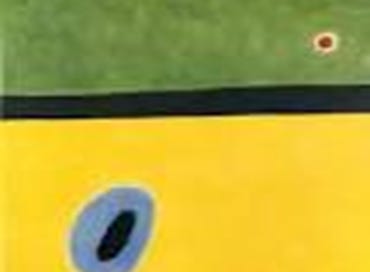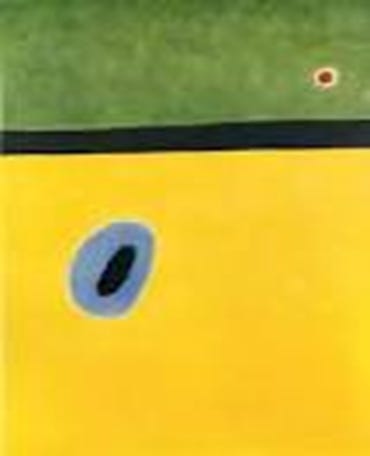
There are three types of tears, according to health authorities. The first type are called Basal tears. These are the tears that your eyes are bathed in all day. They are spread by blinking over all your eye, as a wash, to improve vision and focus, to keep you free from infection. The second type are called Reflex tears. These are the tears that your eyes produce when you chop an onion, washing away harmful irritants. They come from your lacrimal gland, and they contain antibody type elements to fight germs. The third type are called Emotional tears. You already intuitively know that I am not talking about types 1 and 2 in this article. No, I am focusing on type 3, emotional tears.
These tears pour out of you when you are hurt, say, by a rebuff or by a build-up in stress, or when you are emotionally kindled. They contain additional proteins and hormones that are not found in other tears, such as prolactin, potassium, manganese and stress hormones. For emotional tears to kick in, the amygdala in your limbic system – that part of your brain that inter alia regulates emotions – sends a signal to your brain’s message system to activate your lacrimal glands to produce tears. If you make a lot of them, they overwhelm your tear ducts and stream down your face and nose.
The limbic system is an extremely ancient part of the brain, having developed around 250 million years ago. Its various components support a variety of functions including emotion, behaviour, long-term memory, and olfaction. It is likely that, way back then, the limbic system’s primary roles were in behavioural learning, memory of things that were pleasant and unpleasant, and the ‘fight or flight’ syndrome that helped the reptile, mammal, and human to protect itself. Over the aeons of palaeontological development, the limbic system has become a prime mover in our emotional responses, our ability to manage ourselves, to make decisions appropriately, to interrelate successfully.
And to cry.
Here I am, a quiet evening at home. The music swells, the strings now leading the trumpets, horns, flutes, and clarinets. The pitch of the music starts to rise, fall, and rise again. As it does my chin imperceptibly lifts, following my eyes which now gaze into time past, time present and time future. My time, my brain, my patterns. Yet not in a focused way as if I know what I am looking at, simply a plethora of thoughts, memories, and dreams. They are views of an inward land, the ‘blue remembered hills’, ‘the happy highways where I went, and cannot come again’. Not necessarily my childhood, perhaps more often simply a dream, an idyll of thought.
My eyes start to itch, quickly glisten, soon tears are tracking down my face and the whole paraphernalia of inflamed mucous membranes and sinuses in my face takes over.
It is Mascagni’s Intermezzo, that orchestral harmony forming part of the music of Cavalleria Rusticana, a short one act opera written by Pietro Mascagni.
Many people call it the most beautiful piece of music ever written. I am not in that group. What it does for me is far more personal and significant.
Hearing it makes me cry, unfailingly.
Why? And by extension, why do I cry when I recite the poem by AE Housman, Into My Heart an Air that Kills, briefly alluded to in the paragraph above?
Into my heart an air that kills
From yon far country blows:
What are those blue remembered hills,
What spires, what farms are those?
That is the land of lost content,
I see it shining plain,
The happy highways where I went
And cannot come again.
When I listen to Abraham Lincoln deliver the Gettysburg Address, actually more frequently read it to myself. And those times when I remember my own children, especially when I was called to participate in their special celebrations? At our son, Stephen’s, wedding to Jayne when I used Auden’s flibberty-gibbet of a poem, Carry Her Over the Water, as a construct for his wooing of his new wife.
Carry her over the water,
And set her down under the tree,
Where the culvers white all days and all night,
And the winds from every quarter,
Sing agreeably, agreeably, agreeably of love.
Put a gold ring on her finger,
And press her close to your heart,
While the fish in the lake snapshots take,
And the frog, that sanguine singer,
Sing agreeably, agreeably, agreeably of love.
The streets shall flock to your marriage,
The houses turn round to look,
The tables and chairs say suitable prayers,
And the horses drawing your carriage
Sing agreeably, agreeably, agreeably of love.
And then my father of the bride speech for our daughter, Alex, where I could not resist comparing beautiful Alex to Lord Byron’s paramour, who ‘Walks in beauty like the night/Of cloudless climes and starry skies’.
She walks in beauty, like the night
Of cloudless climes and starry skies;
And all that’s best of dark and bright
Meet in her aspect and her eyes;
Thus mellowed to that tender light
Which heaven to gaudy day denies.
One shade the more, one ray the less,
Had half impaired the nameless grace
Which waves in every raven tress,
Or softly lightens o’er her face;
Where thoughts serenely sweet express,
How pure, how dear their dwelling-place.
And on that cheek, and o’er that brow,
So soft, so calm, yet eloquent,
The smiles that win, the tints that glow,
But tell of days in goodness spent,
A mind at peace with all below,
A heart whose love is innocent!
As I type these words, tears are pouring down my cheeks.
Robin, my wife, looks on, not in consternation as she knows me too well, but seeking to empathise. She says ‘they are not sad tears’ and of course this tears me apart again. No, they are happy tears. Or – I need the most precise words now – reflective tears perhaps, creative tears? Closer – but not the cigar.
Creative tears is close as they accompany my emerging efforts (Lord, how I struggle!) to understand, emulate, and finally create something (in my case) written that I can hold some trust in, trust that it represents fairly a creative spark when self-deception is so easy.
The examples pile up. I was standing in Joan Miro’s gallery in Barcelona in 2011 looking at this painting:
unable to interpret, until I stepped forward and read the title:
‘The Lark’s Wing, Encircled with Golden Blue, Re-joins the Heart of the Poppy Sleeping on a Diamond-Studded Meadow’.
I stood dumbstruck, processing the reality that the painter was a poet, only he painted his poetry. I reached for a tissue.
Music, especially opera music, holds a special sentiment, a power, for me. The Chorus of the Hebrew Slaves in Verdi’s Nabucco:
and that series of Mozart arias from the Marriage of Figaro:
Cinque…dieci…
Se vuol ballare
Non più andrai, farfallone amoroso
Porgi, amor, qualche ristoro
Voi che sapete
Eh Susaana non vien? Dove sono i bei momenti
And a blockbuster Pavarotti and Dame Sutherland for good measure (Verdi’s La Traviata):
Pavarotti and Dame Joan Sutherland
I recall sitting down in a movie house a few years ago to watch Three Billboards Outside Ebbing, Missouri. The film became incandescent with this opening:
Three Billboards outside Ebbing, Missouri
Renee Fleming giving one of the great performances of dramatic singing to lift an ordinary song into the sublime, and set the scene for a powerful film on mortality, sexual violence, and loss.
The tears are not restricted to song or music. Here are two of the great contemporary English actors bringing forth sheets of tears with their magnificent voices, superb intonation, and other skills beyond description.
First, Damian Lewis ‘rendering unto Caesar’ as Mark Anthony
and second Colin Firth, his most beloved role (for me), Bertie Windsor, stammerer and introvert, thrust into the limelight of leadership in WW2:
If I wore make up, it would by now be well and truly obliterated!
Tears of joy, sadness, happiness, insight, compassion, drama, tears of inspiration, desperation, the presence of something bigger than myself? Yes, all of these resonate perhaps. Tears for upliftment, improvement, getting better? Certainly, putting together all these links to performances of artistic creativity, it is the words of King George VI in The King’s Speech that cause me the direst distress. A true life situation, one side desperately under strength, words can assume more power than guns and rockets. Is there a clue here?
So, my thoughts on the origin of this characteristic of mine? Well, to be sure, there are millions of people who suffer or rejoice similarly, and the off-hand response to the hurriedly fugitive grabs for tissues usually raise feelings of sentimentality in the not so badly afflicted, the stonier-hearted folk who cannot cry so easily. ‘Oh, he’s a little more emotional than the rest of us’. But to attribute it to an excess of sentiment or emotion I feel does not explain sufficiently.
Here's a suggestion. It was Carl Gustav Jung who first posited a thesis titled the Collective Unconscious. In addition to the personal unconscious, in which reside instincts and attitudes created by personal experiences, there exists a collective unconscious which comprises in itself the psychic life of our ancestors right back to the earliest beginnings. This makes sense in the context of a limbic system of such great antiquity. The Blueprints of mental concepts, instincts, archetypes have been gathering together through the countless generations of reptiles, mammals and humans which are now shared. As the human brain developed, the collective unconscious has a profound influence on the lives of individuals, who live out its symbols and clothe them in meaning through their experiences. This attribute may describe the source of the tears, answer the question Why do I Cry? At least in part.
Not tears of God. Not tears of heaven. Tears rather of the roughly one hundred and fifteen billion people who have ever lived in the past 192 000 years, the whole human race. As a conjecture to what is an unanswerable question anyway, this proposal feels closest to truth.
Virgil, in Book 1 of the Aeneid, described these tears – Sunt lacrimae rerum – ‘these are the tears of things’. Not necessarily tragic, perhaps ‘just because’ (I shrug)…sometimes tears just happen.




